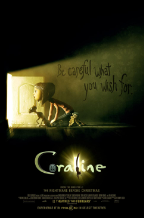Stem cell research remains contentious issue in twenty-first century
Science fiction became reality when Dolly the sheep was cloned and survived in 1996, sparking controversy and moral and scientific debate. The cloning of an animal opened a discussion regarding the possibility of cloning humans, or using stem cell research to remedy a plethora of medical issues. This process of cloning in order to study the progression of diseases is known as therapeutic cloning.
Many regard Dolly as the first cloned animal, but Ian Wilmut and his co-researchers actually cloned other living beings before Dolly. Two years before Dolly, two lambs were cloned “via cell nuclear transfer cloning and gestated through birth,” according to Lifenews.com. The process Wilmut followed to clone the lambs involved taking “the cell nuclei out of sheep embryo cells, [placing] each into a sheep egg that had had its own nucleus removed, [fusing] them, and thereby [generating] cloned sheep embryos.”
The process used in cloning Dolly was very similar, and the only difference “was that the first lambs were made asexually using cells taken from sheep embryos, while Dolly was made asexually from a cell taken from an adult ewe,” also according to Lifenews.com.
These new advances with capabilities in medical technology polarized people into two opposing groups: those who support embryonic stem cell research, and those who oppose it. Researchers and laypeople alike assumed these starkly opposite views.
Proponents of stem cell research and human cloning cite several arguments defending their position. First, they explain that embryonic cells have yet to be coded and can therefore be differentiated into whatever the scientists need. Through this process, the cells can be used to study and, more importantly, to treat, diseases and disorders that include “traumatic spinal cord injury, diabetes, Duchenne’s muscular dystrophy, vision and hearing loss as well as heart disease.”
Second, oncologists will find use for embryonic stem cell research. They can “remove the organs affected by cancer and then use the patient’s own stem cells to regrow their own organs,” reducing or even eliminating the risk of organ rejection and death. Third, embryonic stem cells are “easier to isolate, identify and can be purified easily,” making them easier for scientists to work with than adult stem cells, according to OccupyTheory.com.
On the other hand, those against stem cell research believe that life begins at conception and, because harvesting the stem cells requires disassembling of the embryo, it is an immoral scientific pursuit. Supporters of embryonic stem cell research call the cells pluripotent- or “can give rise to all of the cell types that make up the body,” according to NYS Department of Health. They use the term pluripotent to “to imply that embryonic stem cell cannot make the outer layer of the embryo that is called the trophoblast.” Those opposed to the research explain that “the stem cells that are emptied into the petri dish are able to reform the trophoblast and create an implantable embryo.” Finally, those against stem cell research are so because the process inherently involves chemical manipulation of embryonic cells- that is, cells of a human embryo.
According to National Institutes of Health, human embryonic stem cells have yielded beneficial results for one patient suffering from AMD (age-related macular degeneration) and one patient suffering from Stargardt disease after phase I trials. “Both patients tolerated the treatment well, and both reported improved vision in the treated eye.”
On this twentieth anniversary of the cloning of mammals, the possibility of cloning humans transitions from science fiction to tangible reality. Most recently, news about Dylan the boxer dog surfaced. According to The Guardian.com, Dylan, two weeks after his death “posthumously provided the cells for two cloned puppies” Dylan’s owners, Richard Remde and Laura Jacques, are the definitions of animal-lovers and are self-admittedly “dog-mad.” We will see how these pivotal scientific developments play out in the not so distant future as organisms closer and closer to humans are cloned.









